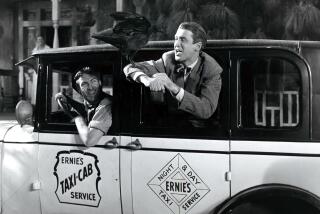Voices Would Add Depth to Solo ‘Christmas Carol’
- Share via
In Charles Dickens’ “A Christmas Carol,” Scrooge learns to cherish other human beings. To borrow a phrase from another English writer, no man is an island.
So, at least on one level, any solo performance of “A Christmas Carol”--even when the soloist is as gifted as Patrick Stewart--misses the point of the story. Apparently Stewart thinks he can do it all on his own.
The fans of this often-performed and usually acclaimed production (it has received four previous salutes from Times critics) are probably already firing up their poison pens.
They’ll consider anyone who says anything negative about it to be on a par with Scrooge himself.
Still, as Stewart was doing his Dickens at the Cal State L.A.’s Luckman Theatre on Saturday, the disparity between the moral of the story and the go-it-alone casting seemed more than philosophical.
Even though Stewart held up a copy of the book at the beginning and the end of his performance, the show was still more about Stewart than it was about “A Christmas Carol.”
A gifted actor was going through his bag of tricks. Many of those tricks were fun to watch and, no doubt, to perform. But the tug of emotion that sometimes wells up during multi-actor renditions of “A Christmas Carol” was missing.
Stewart portrayed at least three dozen characters, never varying his costume from his own black suit and buttoned-up shirt. That’s not necessarily a problem. Regular theatergoers know how to suspend disbelief and use their imaginations to fill in certain visual details.
But one aspect of multi-actor versions of “A Christmas Carol” is the ability to watch Scrooge watching the scenes from his past, present and future. In Stewart’s show, however, Scrooge sometimes disappeared for a few minutes, while Stewart was busy embodying the other people in the more populated scenes.
Again, this process was not without its rewards. It was a kick to see Stewart switching personalities, voices and postures within a split second. His range extends from Scrooge’s own sepulchral tones to a variety of gleeful children of both sexes to the various phantoms who show Scrooge the costs of his stinginess and solitude.
Stewart’s performance was hardly static. He danced, he snored, he clambered up and down a handful of simple pieces of furniture--which he moved around the stage when necessary. He returned frequently to the amusing role of the chiming clock. The man has charisma.
But I suspect that the sold-out houses for two performances and the instant standing ovation at the end (at least on Saturday) are primarily about Stewart’s star turn, not about Dickens.
A generous star turn, yes--proceeds from the upcoming New York run (Marquis Theatre, Dec. 24-30) will benefit victims of the Sept. 11 attacks--but still it’s only one guy up there.
Dickens himself read from “A Christmas Carol” in public, so he probably wouldn’t have objected to this use of his story or to some of Stewart’s omissions.
But it’s also clear that Dickens would not have been an adherent of “less is more.” That way of thinking governs Stewart’s “A Christmas Carol,” to the detriment of Dickens’ “A Christmas Carol.”
More to Read
The biggest entertainment stories
Get our big stories about Hollywood, film, television, music, arts, culture and more right in your inbox as soon as they publish.
You may occasionally receive promotional content from the Los Angeles Times.










